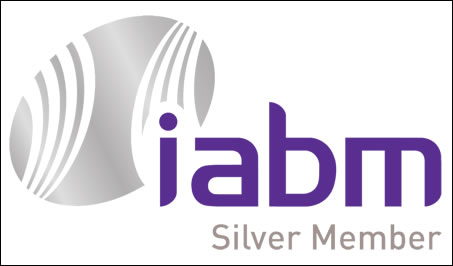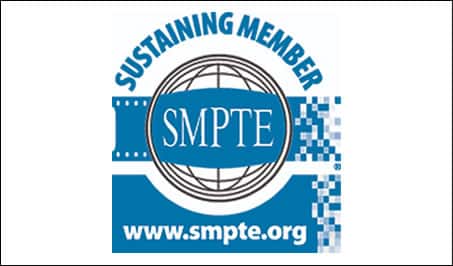AI and the Next Broadcast Automation Wave…
As COVID-19 forced the world into lock-down, quarantine and work-from-home, educate-the-kids-from-home, social distance, wear a mask, don’t wear a mask, wear a mask, and don’t forget to wash your hands, it changed the way we do almost everything. Sweeping changes that saw companies transition from an office only environment to an only work from home environment for adults and schools transition to a learn at home environment for all school age kids regardless of grade level.
One of the predictable results was a spike in breaking news and total news about the pandemic and how the world was coping. Another predictable result was a spike in television viewing and streaming video as we all looked for escapes after working and learning from home and cooking meals and cleaning and any other necessary activities, like TikTok, that have become the new normal for many.
A side benefit of watching more video on our TV’s and devices while quarantined is anecdotal, as well as research-based. There is evidence that the use of captions and subtitles has expanded. We are watching much more video with subtitles and not because of hearing issues but because of a desire to improve our comprehension, make up for poor audio, a noisy room, language barrier or the use of a second screen.
Prior to the pandemic, researchers noticed that more and more people were watching video on their devices with the sound off and the subtitles on because they didn’t want the audio to get blasted out while working or in the doctor’s office or at a restaurant (remember those?). So it’s becoming more the norm to have captions on all the time.
What does this tell us? For the most part broadcasters and content providers were only providing captions and subtitles because a government agency or special group mandated it for the deaf or hearing impaired. Now, however, it appears that it makes good business sense to add captions to everything because:
- It helps with comprehension
- Assists those with language barriers
- Helps when you are watching in a noisy room, think kids in the background, but also think bars, airports and other venues that have TVs mounted on walls or hung from ceilings and because of the environmental noise, you need captions to understand what’s going on.
- As an added benefit, if your video is being watched over the Internet, the subtitles help with SEO so more people will find it as part of search or browsing.
A quick note to advertisers and agencies. Most commercials don’t provide captions so if people are watching with the sound off or turned down it’s very likely they don’t know what you’re selling, heck, half the time, even with the sound I’m not sure what you’re selling.
Behind the scenes, market forces may soon have a negative impact on the captioning market. This is because the number of qualified professionals, called stenographers, who can deliver live captions and subtitles with a high degree of accuracy is declining as older seasoned professionals retire and are not being replaced.
This trend has resulted in a shortfall of over 5,000 stenographers just in the US alone. These openings remain unfilled because this career is no longer viewed as desirable by young people entering the job market. The qualifications are tough and require candidates to be able to type 200+ words per minute with a high degree of accuracy, have highly focused concentration skills and the ability to sit for long periods of time and just type.
Because of the skill and focus required, most who attend stenography school dropout. The average graduation rate is only 4%. The resulting low enrollments have forced many stenography schools to close their doors.
It’s reasonable to expect the current decline in stenographers to continue so broadcasters may soon face an availability problem when they need a human captioner. Thankfully, there’s an alternative for broadcasters and it’s available today.
With the acquisition of Screen Subtitling Systems, BroadStream is focused on solutions to help broadcasters and content providers save money and improve efficiency and accuracy with both live and filed-based captioning and subtitling.
We’re focused on this for several reasons:
- When broadcaster’s budgets are squeezed they look to automation to help them solve problems and do more with less, and their budgets have been hammered by the loss of ad revenue from the pandemic.
- Artificial Intelligence is becoming more important and finding its way into daily workflow.
- We acquired Screen Subtitling Systems as a way to add new features and workflows to OASYS Integrated Playout without having to start from scratch, and we’re doing that with the introduction of…VoCaption – Live, Automated Captioning and Subtitling for broadcasters.
VoCaption helps broadcasters:
- Reduce their dependency on human captioners
- Save over 2/3’s the cost of live human captioning
- Consistently maintain accuracy standards
- Enjoy added protection with stand-by emergency captioning & subtitling
Built around artificial intelligence, VoCaption delivers highly accurate, real-time, speech-to-text processing to provide captions and subtitles in 31 different languages with accuracy rates in the high 90’s easily achievable, depending on audio quality.
Accuracy is further improved by the use of VoCaption’s custom and alternate word dictionaries that allow you to add local or difficult to pronounce words, phrases and geographic terms in advance and create substitutes for words you don’t want going to air.
Speech-to-text processing has been around for a long time but the early results were not that impressive. However, the industry has made great strides over the last few years with faster hardware, significant software improvements and big jumps in the ever expanding AI knowledge base.
Captions and subtitles are traditionally done by humans for both live and file-based content and the cost for live captioning is quite expensive. The average is around $125 per hour but depending on the event it can range anywhere from $60 per hour to over $300 per hour depending on who you talk too.
In addition to higher levels of accuracy, automated captioning is less expensive than human captioning and can offer savings, as much as 2/3’s or more depending on current arrangements.
One of the early knocks against AI based solutions was it took too long for the systems to learn and they often stumbled with hard to pronounce names and words, foreign words, local or regional dialects, geography and similar issues.
VoCaption takes a different approach to accuracy. Yes, we use an AI based, speech engine to convert the speech-to-text but we looked for ways to accelerate learning and teach the system to eliminate the typical start-up issues many products on the market experience.
- We include a custom dictionary that we begin building during the commissioning process to add local and hard to pronounce words that are unique to each area. In addition to traditional spelling we can also include the phonetic spelling to assist with proper pronunciation.
- We include an alternate words dictionary that will substitute certain words you don’t want going to air. It can also be used to include proper words and nouns that should be capitalized when written. So, taking the time to properly commission your system will dramatically improve your accuracy from day one, and it will only get better.
VoCaption is available in several options:
- Single 1RU rackmount unit to work with 3rd party subtitle encoders.
- Integrated with Polistream, BroadStream’s global leader in caption and subtitle encoding.
- Integrated with OASYS Integrated Playout available in SD, HD and IP.
- As a software only solution with specific hardware that are customer provided.
If you remember that the typical price range for live captioners is $60 to $300 per hour with an average of roughly $125 per hour. VoCaption will provide significant savings because the human is removed from the cost structure.
Make sure you are in control as it relates to captioning and subtitles. Don’t wait until the shortage of stenographers catches up with broadcasters and begin to save money now.
Want to see VoCaption in action for yourself? We’re happy to show you an online demo and you get to pick the video we use. To schedule your own demonstration please click here and complete the Product Inquiry at the bottom of the page.





